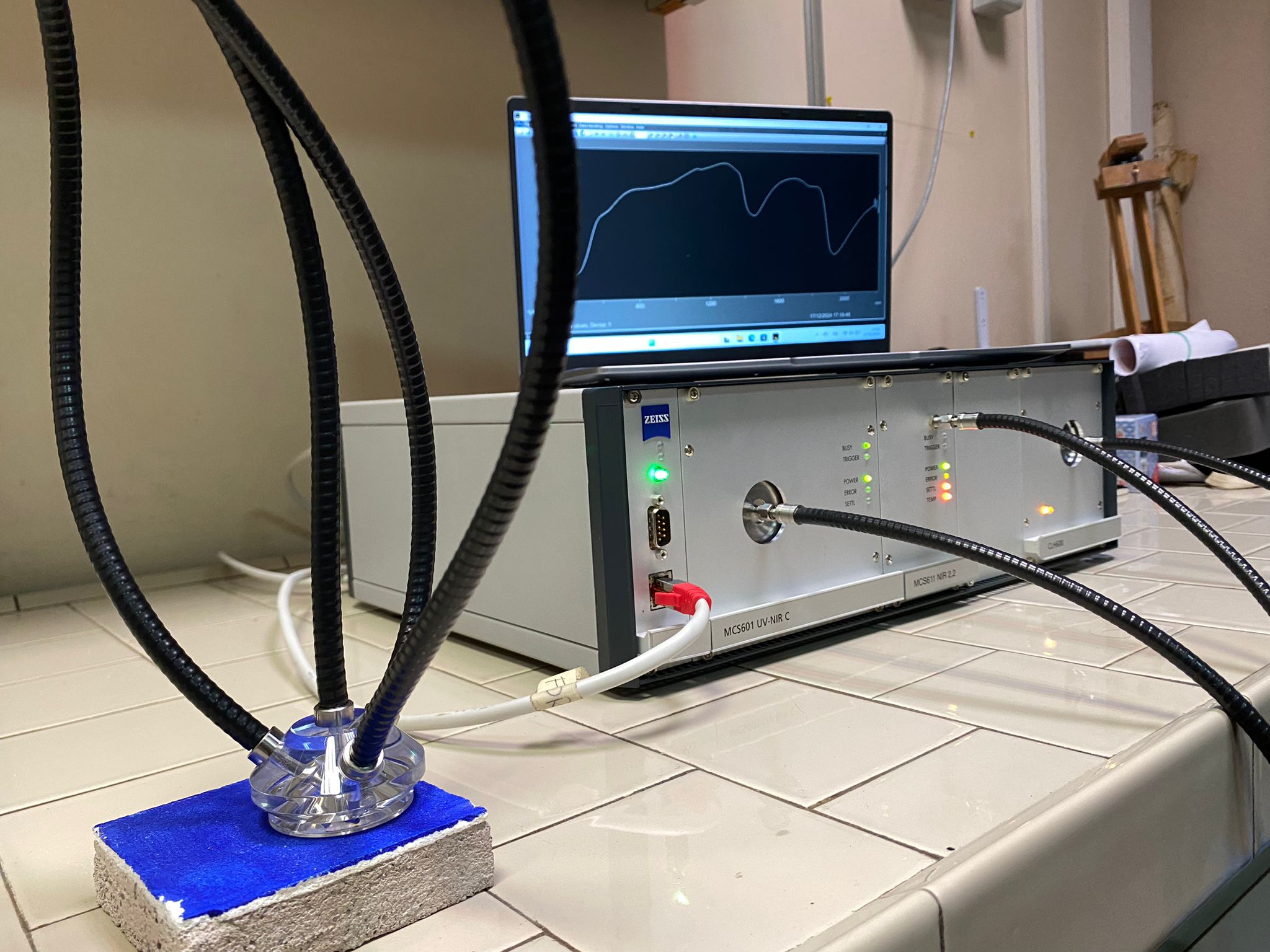Service: VIS-NIR Reflectance Spectroscopy
Platforms
Molab
Techniques
Uv-vis-nir reflectance spectroscopy

Organization
Service contact persons
VIS-NIR Reflectance Spectroscopy is a non-invasive technique that provides short analysis times. It offers valuable insights for identifying organic and inorganic pigments and for analyzing changes in paintings.
The analysis can be performed using two different probe heads: a plastic head controller with a 3x45°/0° geometry to avoid specular reflected light, and another with a 0° geometry. The system consists of the models MCS 601 UV-NIR and MCS611 NIR 2.2 WR, which are mounted on the same chassis. These instruments are designed to operate within the 190–2200 nm range, but the configuration used here allows the acquisition of reflectance spectra in the 380–2200 nm range. The acquisition step is 0.8 nm per pixel in the 190–1015 nm range and approximately 6 nm per pixel in the 910–2200 nm range. The sampling is about 2 mm in diameter, with a working distance of approximately 4.5 mm. The instrument is calibrated using a white Spectralon standard (99% reflectance).
Fields of application
Conservation science (cultural heritage discipline)
Preventive conservation
Materials
Organic pigment
Inorganic pigment
Methods
Other information
-
Input: Imaging/photographic (Vis, UV, NIR) documentation available from the users (jpg, tiff)
-
Output: CSV files, complete MOVIDA file with measuring points, metadata (experimental conditions, comments relative to the point), data interpretation.

